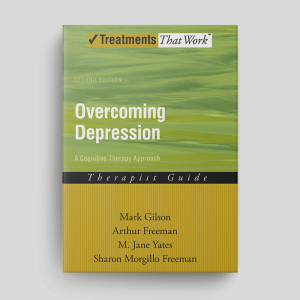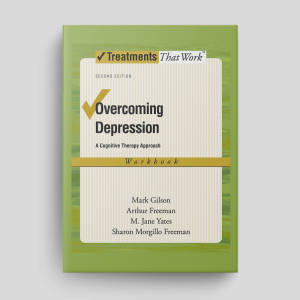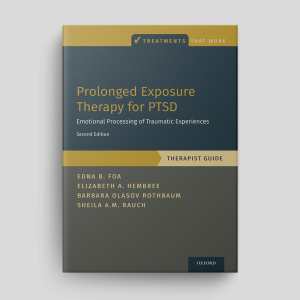The Coping Long Term With Active Suicide Program (CLASP): A Multi-Modal Intervention For Suicide Prevention: Clinician Guide
The Coping Long Term with Active Suicide Program therapist guide provides step-by-step instructions and evidence-based strategies for supporting individuals who are at risk of suicide.
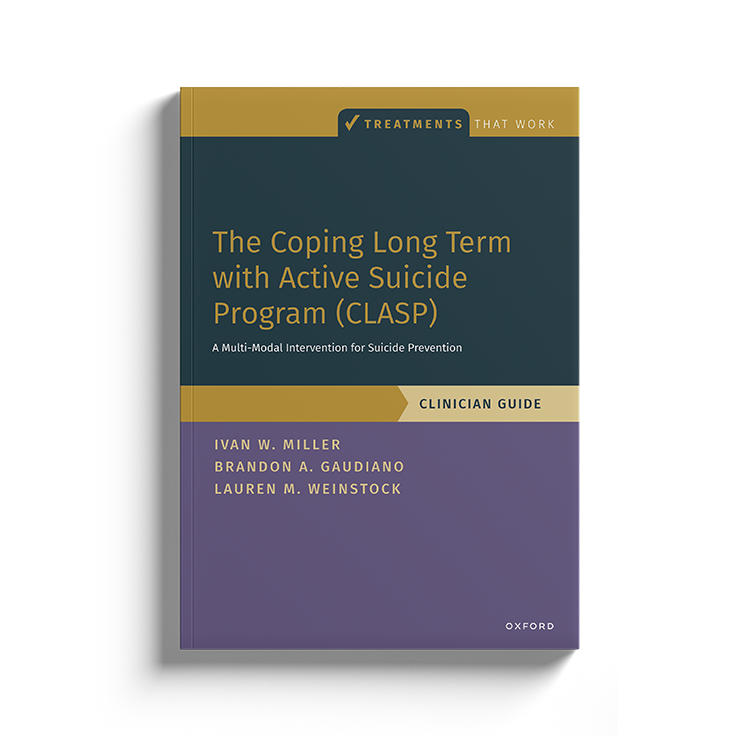
Download or send
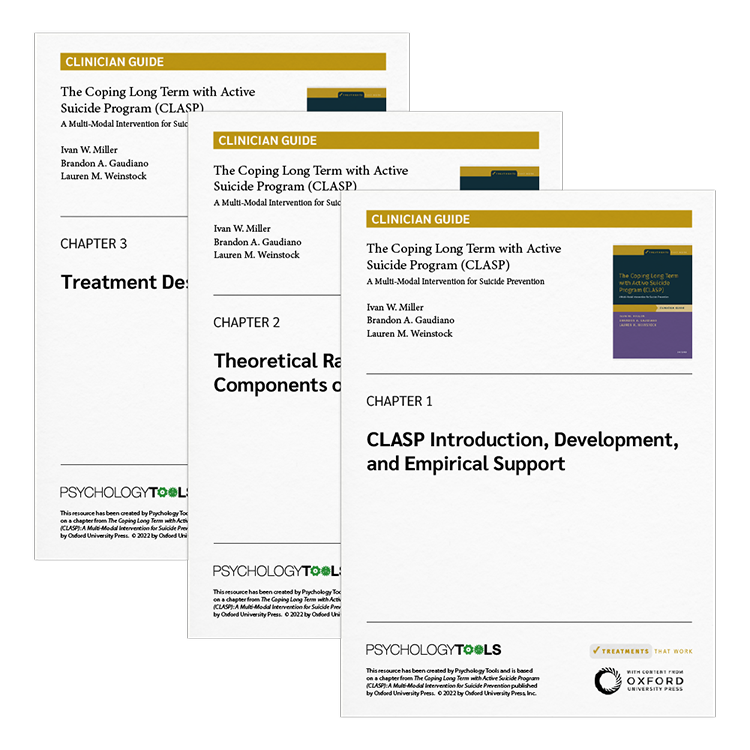
Overview
The Coping Long Term with Active Suicide Program (CLASP) is an innovative intervention addressing the public health crisis of suicide. CLASP aims to reduce suicide risk by targeting modifiable factors such as hopelessness, poor social support, impaired problem-solving, and treatment non-adherence. Drawing from family-based interventions, acceptance and commitment therapy (ACT), and problem-solving therapy, it integrates evidence-based strategies in a flexible, hybrid format of in-person sessions and cost-effective phone follow-ups. This makes CLASP adaptable across clinical settings and effective during care transitions. Supported by strong empirical evidence, CLASP has demonstrated reductions in suicide attempts, improved psychosocial functioning, and greater treatment engagement. This guide provides clinicians with step-by-step instructions, customizable strategies, and practical tools to implement CLASP effectively – an accessible, sustainable solution to help prevent suicide. Part of the Treatments That Work™ series, it is an essential resource for mental health professionals.
CLASP is published in one volume: a Clinician Guide only.
Why use this resource?
This program provides a step-by-step, structured approach for working with people who at risk of suicide. It includes:
- Effective interventions for reducing suicide risk.
- Practical guidance for implementing CLASP and structuring interventions.
- Strategies for overcoming common obstacles during treatment.
Key benefits
Multi-Faceted
Structured
Effective
Trusted
What difficulties is this for?
Suicide
Individuals who are at risk of suicide.
Integrating it into your practice
Assess
Identify patients at high risk of suicide.
Implement
Use CLASP to reduce suicide risk and address critical risk factors such as hopelessness.
Adapt
Modify intervention based on individual needs and risk factors.
Coordinate
Work alongside other outpatient providers to ensure continuity of care.
Theoretical background and therapist guidance
Suicide represents one of the most pressing public health crises worldwide, with over 800,000 deaths annually, making it the third leading cause of death among individuals aged 15 to 24 years (WHO, 2019). In the United States alone, suicide accounts for more than 48,000 deaths and 1.4 million attempts annually, representing the 10th leading cause of death across all age groups (Drapeau & McIntosh, 2020). Suicide attempts also drive 40% of psychiatric inpatient admissions and 3% to 8% of all emergency department (ED) visits (McIntosh, 2003).
The Coping Long Term with Active Suicide Program (CLASP) offers a multi-faceted, scalable intervention that integrates established strategies into a single cohesive framework. It targets key risk factors for suicide, including hopelessness, poor social support, impaired problem-solving, and treatment adherence issues (Beck et al., 1990; D’Zurilla et al., 1998; Keitner et al., 1990). These risk factors are highly modifiable and strongly predictive of suicide risk across diverse populations (Joiner et al., 2005; Institute of Medicine, 2002).
CLASP builds on evidence from family-focused and telephone-based interventions. The family intervention telephone tracking (FITT) model forms a key foundation for CLASP; it emphasizes family support and problem-solving, and has successfully improved outcomes in stroke patients, Alzheimer’s caregivers, and HIV-positive individuals (Bishop et al., 2014; Stein et al., 2006; Tremont et al., 2008). Additionally, acceptance and commitment therapy (ACT) informs CLASP’s values clarification component, which fosters motivation and adherence to treatment by aligning behaviors with deeply held personal values (Hayes et al., 1999; Wilson & Murrell, 2004).
By integrating evidence-based components into a transdiagnostic, scalable framework, CLASP represents a critical advancement in suicide prevention. It offers a flexible, empirically supported model capable of addressing the diverse needs of high-risk individuals while emphasizing simplicity, accessibility, and sustainability in real-world clinical settings. In a large-scale trial in emergency departments, patients receiving CLASP had 30% fewer suicide attempts over a one-year follow-up compared to treatment as usual (Miller et al., 2017). Ongoing research, including the veterans coordinated community care study, demonstrates CLASP’s adaptability across diverse settings and populations, particularly when combined with predictive technologies like machine learning.
Authored by leading psychologists including David Barlow, Michelle Craske and Edna Foa, Treatments That Work™ is a series of manuals and workbooks based on the principles of cognitive behavioral therapy (CBT).
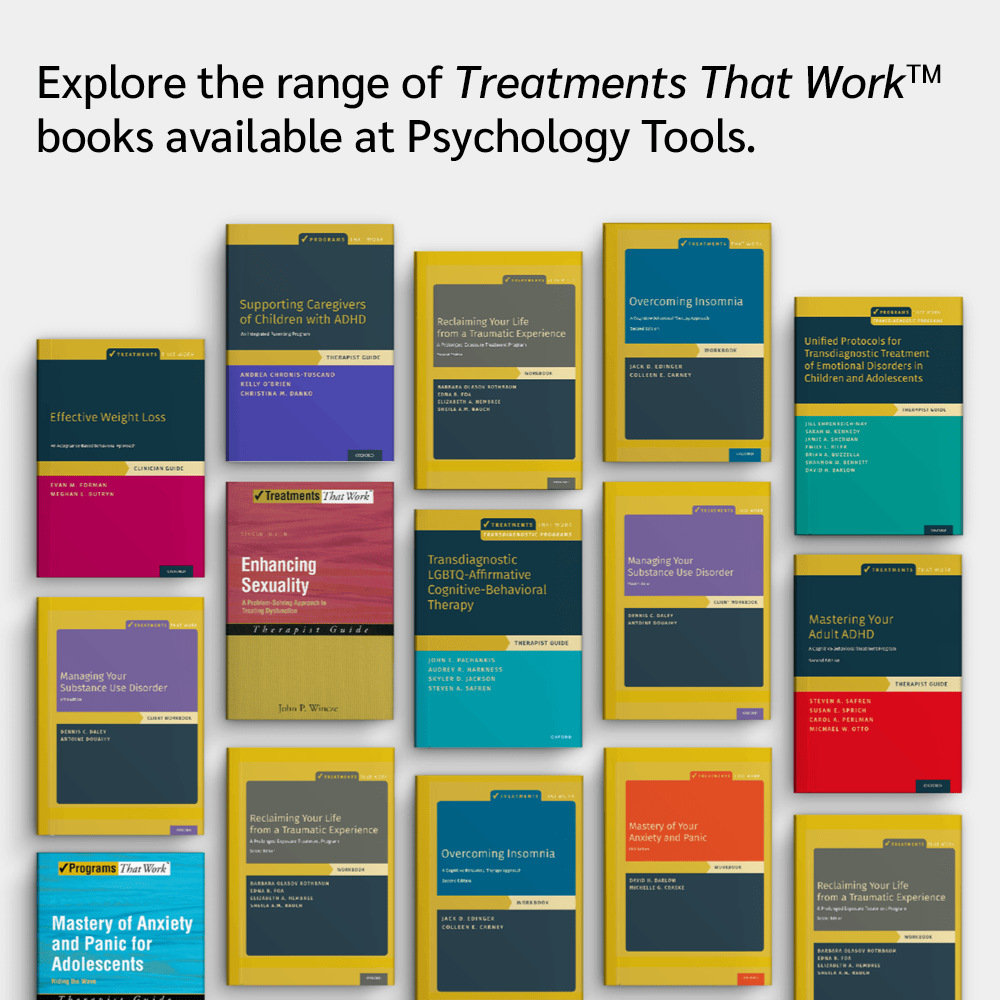
What's inside
- Step-by-step guidance for implementing CLASP.
- Detailed session outlines covering in-person and telephone-based interventions.
- Adaptations for specific populations, including military veterans and adolescents.
- Tools for suicide risk assessment and crisis planning.
- Guidance on integrating significant others into the intervention process.
FAQs
How this resource helps improve clinical outcomes
- Enhances patient engagement and treatment adherence.
- Reduces suicide risk by targeting multiple contributing factors.
- Incorporates a range of effective interventions.
- Tailorable to client needs.
Clinicians who use this resource also use
References and further reading
- Barlow, D. H. (2010). Negative effects from psychological treatments: A perspective. American Psychologist, 65(2), 13-20.
- Beck, A. T., Brown, G. K., & Steer, R. A. (1989). Relationship between hopelessness and suicide: A replication with psychiatric outpatients. American Journal of Psychiatry, 146(3), 357-360.
- Miller, I. W., Gaudiano, B. A., & Weinstock, L. M. (2016). The Coping Long Term with Active Suicide Program (CLASP): A Multi-Modal Intervention for Suicide Prevention. Oxford University Press.
- Stanley, B., & Brown, G. K. (2012). Safety planning intervention: A brief intervention to mitigate suicide risk. Cognitive and Behavioral Practice, 19(2), 256-264.
- Weinstock, L. M., Gaudiano, B. A., & Miller, I. W. (2013). Adapting CLASP for inpatient suicide prevention: Feasibility and preliminary findings. Suicide and Life-Threatening Behavior, 43(1), 47-58.
Just enter your name and email address, and we'll send you The Coping Long Term With Active Suicide Program (CLASP): A Multi-Modal Intervention For Suicide Prevention: Clinician Guide (English US) straight to your inbox. You'll also receive occasional product update emails wth evidence-based tools, clinical resources, and the latest psychological research.
Product
Company
Support
- © 2026 Psychology Tools. All rights reserved
- Terms & Conditions
- Privacy Policy
- Cookies Policy
- Disclaimer
Working...
We value your privacy
This site uses strictly necessary cookies to function. We do not use cookies for analytics, marketing, or tracking purposes. By clicking “OK”, you agree to the use of these essential cookies. Read our Cookie Policy
